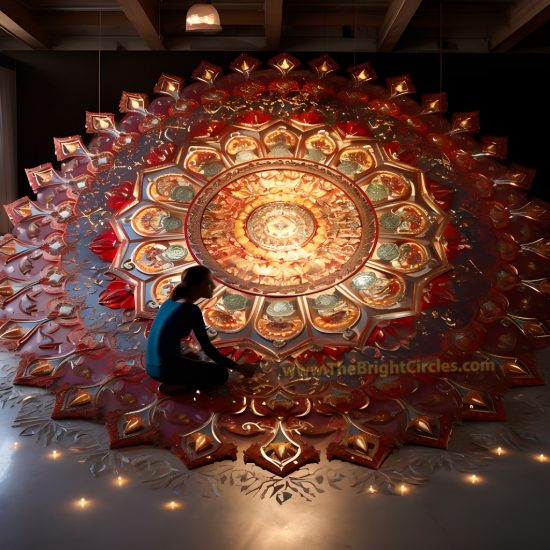 Julia Nicole Bright, Contributor
Julia Nicole Bright, Contributor
Updated August, 28 2024
A mandala, which translates to “sacred center” or “circle” in Sanskrit, is not just a beautiful, symmetrical geometric pattern. It symbolizes the universe, reflecting the microcosm and macrocosm and bringing order out of chaos. Across various cultures, mandalas carry profound spiritual and sacred symbolism. They are tools for spiritual harmony, guiding individuals on an inner journey toward a sense of unity and wholeness.
At the center of a mandala is typically a point, symbolizing the origin—the source of all existence. From this central point, circles, squares, triangles, and other shapes radiate outward, each carrying its own unique symbolism. Mandalas are characterized by intricate patterns and designs that generally represent harmony, balance, and the interconnectedness of all things in the universe. Gazing at a mandala can bring a sense of peace and inspire self-reflection and mindfulness. The creation and contemplation of mandalas are considered therapeutic practices, helping to reduce stress, enhance focus, and foster a sense of inner calm.

When you create a mandala, you are not merely drawing, you are meditating, channeling your energy into each stroke and element of the composition. This process becomes a form of spiritual practice, forging a connection with higher forces. Mandalas do more than adorn a space, they serve as powerful tools for concentrating the mind, diving into meditation, and achieving inner harmony.
The colors used in mandalas hold deep esoteric significance. For example, blue might represent infinity and profound wisdom, while green symbolizes healing and renewal. Purple, often found in mandalas, enhances intuition and helps open the door to higher knowledge. Combining these colors creates specific vibrations that influence a person’s emotional and spiritual state.
Mandalas are much more than just visual art. They are ancient practices that convey deep wisdom and knowledge about the nature of the universe and the human soul. These art forms have the power to influence our consciousness, helping us attain harmony, inner peace, and spiritual growth. A thoughtful exploration of these artistic forms opens vast horizons for creativity and self-discovery, enabling one to bring order to one’s mind, improve mental health, and even transform one’s reality.
These intricate patterns consist of various shapes and colors, each carrying its own meaning. For example, purple in mandalas is often associated with higher consciousness and wisdom, as confirmed by modern research showing its ability to deepen meditative states and foster intuitive thinking.
Today, mandalas are remarkable, multi-layered forms of art where deep spiritual wisdom intersects with refined aesthetics. These ancient practices are not just visually captivating; they open the door to the unseen realms of the subconscious and create powerful, energetic channels that connect us with higher energies.
More articles on esoteric art:
ESOTERIC ART
SACRED GEOMETRY


